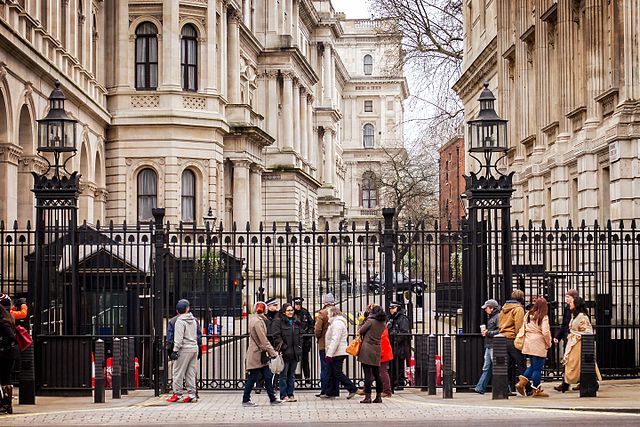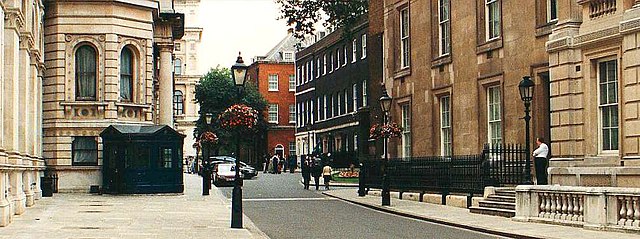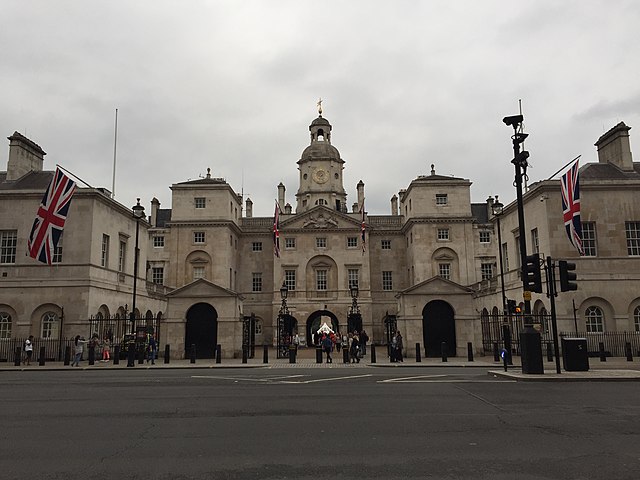Downing Street is a street in Westminster in London that houses the official residences and offices of the Prime Minister of the United Kingdom and the Chancellor of the Exchequer. Situated off Whitehall, it is 200 metres (660 ft) long, and a few minutes' walk from the Houses of Parliament. Downing Street was built in the 1680s by Sir George Downing.
Downing Street seen from Whitehall, 2013
Sir George Downing, 1st Baronet
View of the old Foreign Office and other buildings on Downing Street in an 1827 watercolour by John Chessell Buckler
Downing Street looking west. The Foreign and Commonwealth Office is on the left, the red house is No. 12, the dark houses are No. 11 and No. 10 (nearer, and partially obscured), and the building on the right is the Barry wing of the Cabinet Office, which has its main frontage to Whitehall.
Whitehall is a road and area in the City of Westminster, Central London, England. The road forms the first part of the A3212 road from Trafalgar Square to Chelsea. It is the main thoroughfare running south from Trafalgar Square towards Parliament Square. The street is recognised as the centre of the Government of the United Kingdom and is lined with numerous departments and ministries, including the Ministry of Defence, Horse Guards and the Cabinet Office. Consequently, the name "Whitehall" is used as a metonym for the British civil service and government, and as the geographic name for the surrounding area.
Whitehall pictured in 2012, with The Cenotaph and Monument to the Women of World War II in the middle of the carriageway, and the Elizabeth Tower housing Big Ben in the background.
Whitehall, looking south in 1740: Inigo Jones' Banqueting House (1622) on the left, William Kent's Treasury buildings (1733–37) on the right, the Holbein Gate (1532, demolished 1759) at centre.
View of the Horse Guards Building from Whitehall, showing the three arches that link it to Horse Guards Parade
Whitehall, looking north in 1953, with the Earl Haig Memorial in the middle of the carriageway.








